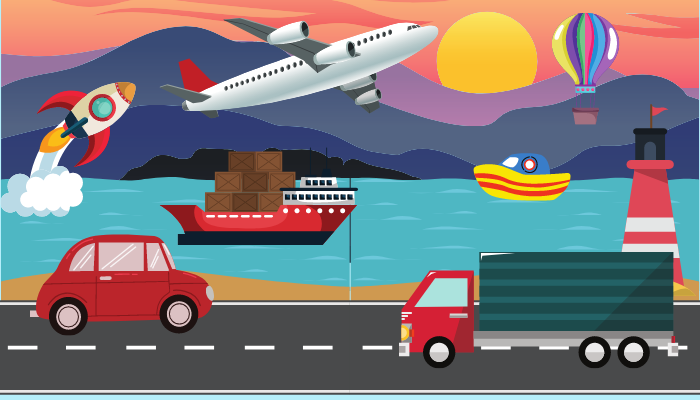
Transportation is an integral part of our daily lives, enabling us to connect with people, places, and opportunities. From ancient times to the modern era, humans have developed various modes of transportation to meet their evolving needs. In this comprehensive blog post, we will delve into the fascinating world of transportation and explore the multitude of options available today.
- Land Transportation:
Land transportation encompasses a wide range of modes, each serving a specific purpose. These include:
- Automobiles: The most common form of transportation, automobiles offer convenience and flexibility for personal travel. From sedans to SUVs, electric vehicles to autonomous cars, the automotive industry continues to innovate.
- Trains: An efficient and reliable mode of transportation, trains are widely used for both passenger and freight transport. High-speed trains, such as the Shinkansen in Japan, have revolutionized long-distance travel.
- Bicycles: Environmentally friendly and cost-effective, bicycles provide a sustainable means of transportation, promoting health and reducing traffic congestion in urban areas.
- Air Transportation:
Air transportation has revolutionized global connectivity, shrinking distances and making international travel accessible to millions. Key modes of air transportation include:
- Commercial Airlines: With a vast network of routes, commercial airlines transport passengers and cargo across the globe. From jumbo jets to regional aircraft, air travel offers speed and efficiency.
- Helicopters: Helicopters provide vertical takeoff and landing capabilities, making them ideal for emergency medical services, search and rescue operations, and aerial surveys.
- Drones: Unmanned aerial vehicles, or drones, have gained popularity in recent years. They are used for various purposes, including aerial photography, package delivery, and even monitoring wildlife.
- Water Transportation:
Water transportation has played a crucial role in human history, facilitating trade and exploration. Today, it remains a vital mode of transportation. Notable forms of water transportation include:
- Ships: From massive cargo vessels to luxurious cruise ships, maritime transportation moves goods and people across oceans and seas. Container ships have revolutionized global trade, enabling the transportation of goods on a massive scale.
- Ferries: Ferries provide a convenient means of transportation across bodies of water, connecting islands and coastal regions. They are popular among commuters and tourists alike.
- Submarines: While primarily used for military purposes, submarines also serve scientific research and underwater exploration. They offer a unique mode of transportation beneath the ocean's surface.
- Space Transportation:
Advancements in technology have opened up the realm of space transportation, allowing humans to venture beyond Earth's atmosphere. Key modes of space transportation include:
- Rockets: Rockets are used to launch satellites into orbit and transport astronauts to space stations. Companies like SpaceX are pioneering reusable rocket technology, making space travel more cost-effective.
- Space Shuttles: Space shuttles, like the retired NASA Space Shuttle program, were designed for reusable space travel. They played a crucial role in constructing the International Space Station.
Conclusion:
The world of transportation is vast and diverse, offering a multitude of options to meet our ever-growing mobility needs. From land to air, water to space, each mode of transportation serves a unique purpose and contributes to the interconnectedness of our global society. By understanding and embracing these various modes, we can continue to shape the future of transportation and enhance our quality of life.

